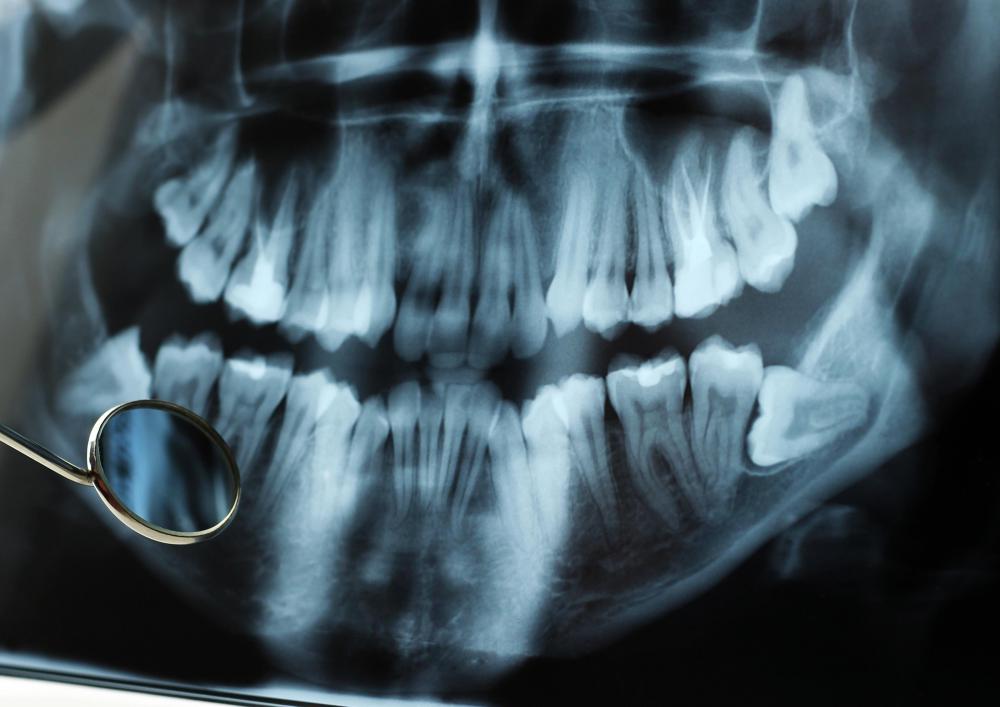At TheHealthBoard, we're committed to delivering accurate, trustworthy information. Our expert-authored content is rigorously fact-checked and sourced from credible authorities. Discover how we uphold the highest standards in providing you with reliable knowledge.
What is a Third Molar?
In humans, a third molar is a tooth located in the very back of the mouth. Molars are designed for grinding, and most humans have 12, located at the very back of the upper and lower jaws on both sides of the mouth. The third molars erupt later in life, usually in the late teens, and are sometimes known as the wisdom teeth. It is a common practice in many regions of the world to remove these teeth in the late teens or early 20s.
On the lower jaw, the third molars are known as mandibular third molars, while the third molars on the upper jaw are called maxillary third molars. Not everyone develops these teeth. In some populations, they are quite rare, while in others, they are more common. These teeth are also not necessarily problematic. In some regions of the world, many people develop third molars and experience no health problems, keeping the teeth for life.

In other cases, a third molar can become an issue. There are several ways in which these teeth can cause problems. The most common is impaction; the jaw sometimes does not have room for the tooth, forcing it to grow at an awkward angle or erupt incompletely. This can cause jaw pain, and may put people at risk for infections. Some dentists also believe that erupting third molars can put pressure on other teeth and force them out of position.

A dentist may recommend extraction of one or more of the third molars to a patient if the patient appears to be developing dental problems. There are some risks to extraction which need to be considered, including risks of nerve damage and a rare complication in which extraction of the maxillary third molars creates a hole in the maxillary sinus. These risks aside, patients usually experience pain after the third molar extraction surgery, and can be at risk of infection while their mouths heal.

If a dentist recommends a third molar extraction, the patient should ask about the reason for the recommended extraction, and any possible alternatives. Some dentists take a more aggressive approach to prophylactic care and recommend extraction when a wait and see approach might be better, and it is important to be aware of this when weighing a dentist's recommendations. It is also advisable to go over the risks of the procedure, and to ask detailed questions about aftercare so that the patient knows what to expect from third molar surgery recovery before the procedure happens.
AS FEATURED ON:
AS FEATURED ON:













Discuss this Article
Post your comments